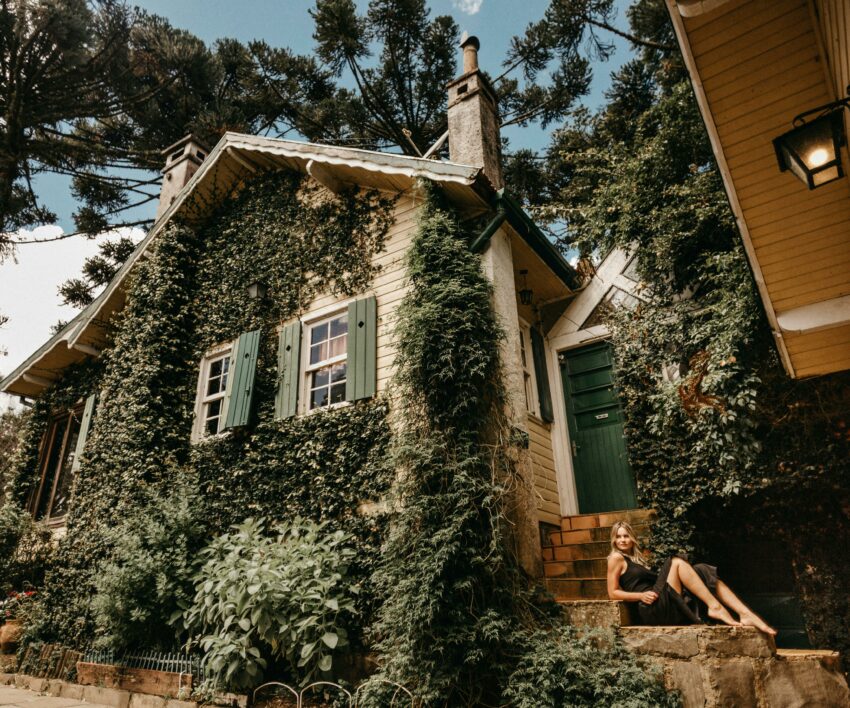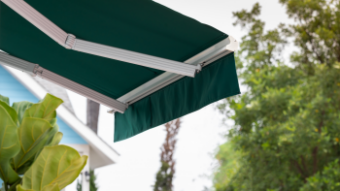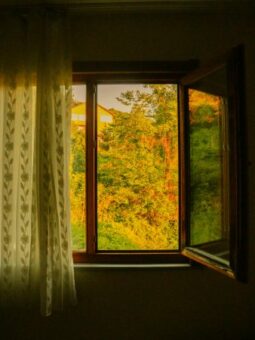
Summer is almost here (yay), and while we’re all excited for the braais and pool parties, it also means our homes are going to be hotter. Cooling down the house so you can take a break from the heat is easier than you think. The solution: shade-scaping.
Instead of installing aircon or walking around with a fan inside, you can use natural shading techniques to cool down your home.

What is shade-scaping?
Shade-scaping is all about harnessing the power of nature to keep your home cool. It involves carefully planning and planting trees, shrubs, and other greenery in positions that provide shade to your house, helping to reduce the amount of direct sunlight hitting your windows and walls. Think of it as an eco-friendly, aesthetically pleasing way to beat the heat, without relying heavily on electrical cooling devices.
The benefits of shade-scaping
Beyond just cooling your home, Shade-scaping brings a range of benefits that will make you wonder why you didn’t start sooner. Strategically placed plants can reduce indoor temperatures by blocking direct sunlight, helping you save on energy costs and reducing your carbon footprint. Plus, Shade-scaping enhances the curb appeal of your home and offers a lovely spot to relax in your garden, even during the hottest part of the day. Not to mention, it’s also great for local wildlife—providing shelter and food sources for birds and pollinators like bees and butterflies.
Ideas to get you started

Now that you know what Shade-scaping is, how do you start? Here are a few ideas to inspire your own natural shading project.
Plant tall, deciduous trees
One of the most effective ways to cool your home is by planting tall, leafy trees around it. Deciduous trees, such as oak, maple, or jacaranda, are excellent choices because they offer thick foliage in the summer, providing ample shade. Come winter, they shed their leaves, allowing the warmth of the sun to filter through and naturally heat your home. Plant them on the west and south sides of your house, where the sun’s rays are most intense during the afternoon.
Try vertical gardens
No space for large trees? Consider vertical gardens! These are perfect for urban homes and small gardens. Vertical gardens use climbing plants like ivy, jasmine, or passionflower, which grow along trellises, fences, or walls, creating a natural green curtain that absorbs heat and provides shade. Bonus: they add a beautiful, natural element to your exterior decor.
Invest in pergolas and awnings
If you’re looking for something more structural, pergolas and awnings are great options for shading patios, decks, or large windows. Pergolas provide a lovely, open framework that you can train plants to grow over, such as wisteria or grapevines. Meanwhile, retractable awnings can be positioned directly above windows or doors, allowing you to control how much sunlight you let in during different times of the day.

Shrubs for lower-level shade
While trees take care of higher-up shading, don’t forget to plant shrubs closer to your house. These can provide additional protection from the sun’s heat by shading the lower parts of your windows. Consider dense, drought-tolerant options like lavender, oleander, or rosemary for a mix of beauty and functionality.
Use shade sails and outdoor fabrics
For a modern, minimalist look, shade sails can be a sleek way to add shading without interrupting your view of the garden. These fabric panels are stretched over patios, courtyards, or play areas and offer a cool, shaded space to enjoy the outdoors. Available in various colours and shapes, shade sails are as stylish as they are practical.

Tips for success
While Shade-scaping is a natural solution to keeping your home cool, it does require a bit of planning. Here are a few tips to ensure success:
Plan for growth: Keep in mind how big your plants or trees will grow over time, and ensure you’re planting them at a distance that allows for their mature size.
Consider your climate: Choose plants and trees that are suited to your local climate. Drought-resistant plants are often best, especially in areas prone to water shortages.
Think seasonally: Remember, Shade-scaping should work for you year-round. Consider how much sunlight your home will need in the winter and plan accordingly.
Compiled by: Jade McGee
First published by Woman&home
Also see: 97-year-old TikTok grandmother Mamntlane gets a new house




